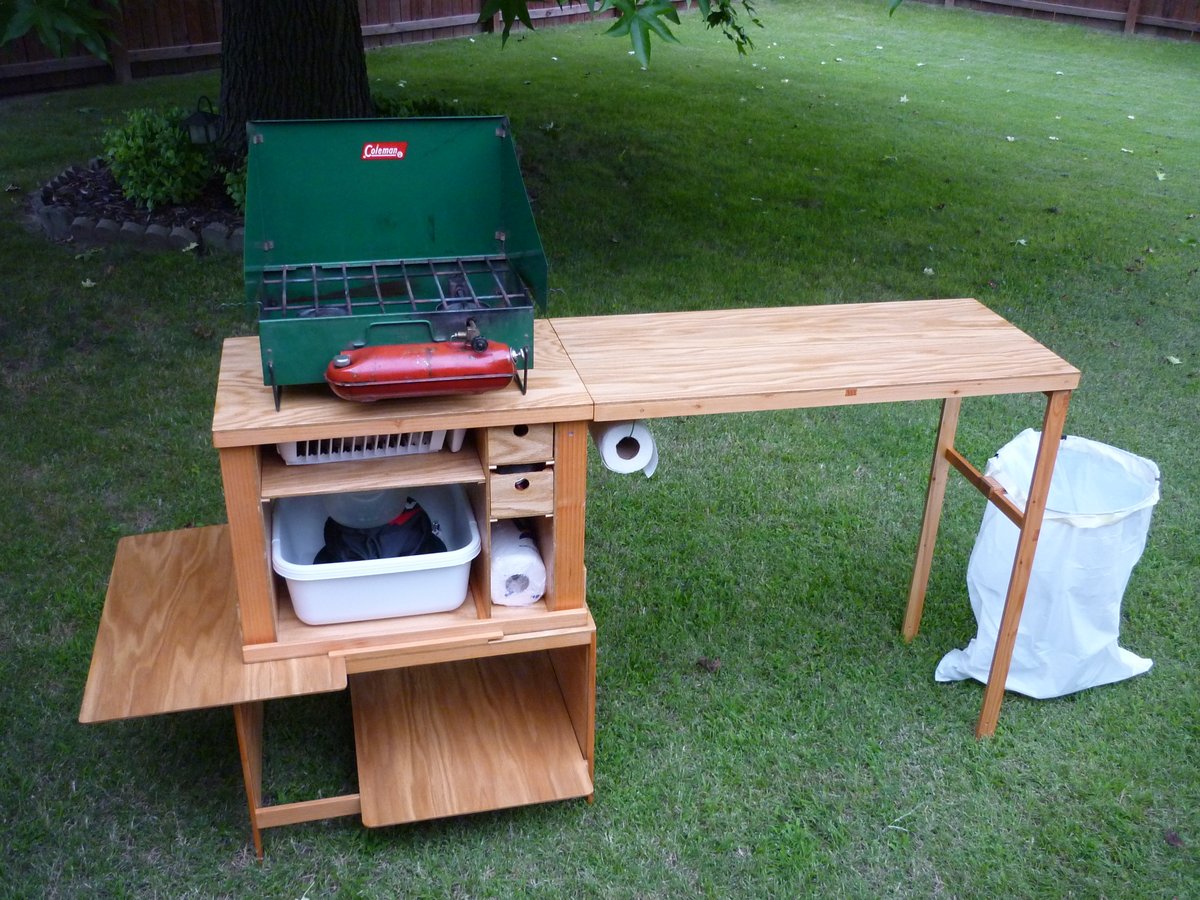
I saw this project on LJs a short while ago and knew that I had to build one. So here it is, my version of the Blue Sky Kitchen Grubby One. I also made the leaf accessory and a couple of special extras. I really liked this design that seems to that give you endless possibilities for storing items for a camp kitchen. There are two drawers, an adjustable shelf, and a storage pocket on each side. One of the side pockets has hooks at the top to hang cooking utensils and the other is a spice rack. The base slides onto the top of the box for carrying. And the side covers become extra counter top space. The leaf accessory has a foot with a french cleat style attachment to a mating piece on the box. The leaf’s folding leg is hinged on a 1/4” Oak dowel. A second oak dowel can be inserted through both sides of the top and the far ends of both legs to lock them in place for transporting.
The wood is 1/4” MDF core Oak plywood (as called for in the plans) and Douglas Fir for the ‘bone’ material. The plans had specified Redwood, but I was unable to find any. There are only a few screws used in the base and the leaf, otherwise it is all held together with lots of glue and brad nails. The finish is two coats of spar urethane.
I do have a few gripes now that I have reached the conclusion of the project. The first is weight of the finished project. Even with the innovative ‘skin and bone’ construction technique espoused by the creator, the box still weighs in at almost 32 pounds when empty. Fully loaded it weighs over 50 pounds. This is still manageable for carrying short distances but I still wish the box was lighter. I am thankful that I didn’t try coming up with my own design and using 3/4” plywood. The second gripe is that the base does not secure to the box. Thus requiring the carrier to grip the base through the cutouts in the sides while using their fingers to carry the weight of the box itself. I did come up with a solution to this as described later. The third gripe is with the plans themselves. I purchased them expecting the PDF to contain lots of assembly photos like in the woodworking magazines. What I got was lots of CAD drawings that were not the easiest to follow.
But wait there is more! The special extras that I have been alluding to…
The first is a solution to the carrying problem. I decided that somehow the box must be secured to the base during carrying and storage. I thought about some form of machine screws through the base into threaded inserts in the top of the box. But I thought this would ruin the ‘all wood’ look of the project by drilling holes in the top and adding hardware. So I came up with some ‘locking bars’ to wedge between the box and the base. With all four in place the base and the box become one unit for transporting.
The second bonus feature is a trash bag holder. I considered buying a collapsible trash can, but instead came up with this. It is simply a piece of steel wire bent into a circle and welded together. A small piece of Oak has a dado through it that captures the wire. Some wedges of Douglas Fir were glued in place to secure it. And a C shaped claw on the end is sized to slip securely onto the leg stretcher of the accessory leaf. Binder clips secure a trash bag to the hoop.
And the final bonus feature of the project is not my idea but merely a slightly different implementation of it. It is a paper towel holder made of a piece of 14ga copper wire. It threads through a roll of paper towels and hooks onto the leg locking dowel in the leaf. Ken the creator of the Grubby One showed this technique by hanging it off the side of the spice rack in his videos. But the dowel in the leaf also seemed like a perfect spot for it to go as seen in my pictures. I like that it continues the theme that all elements of the project serve multiple purposes.

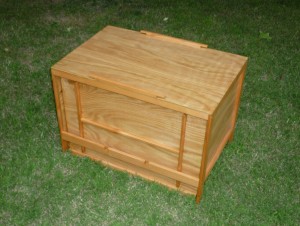
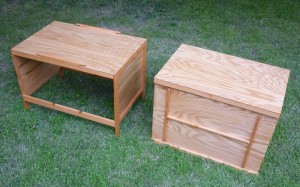
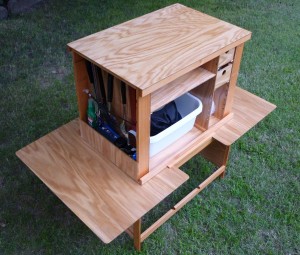
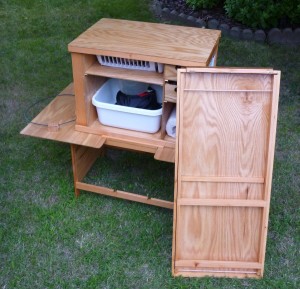
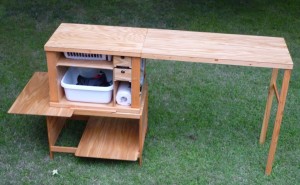
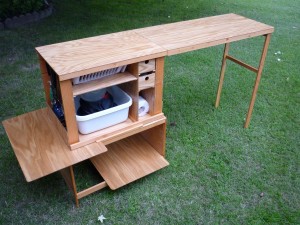
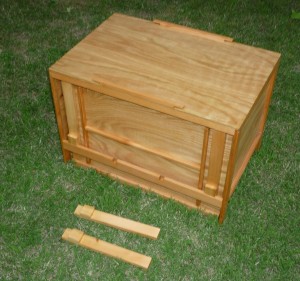
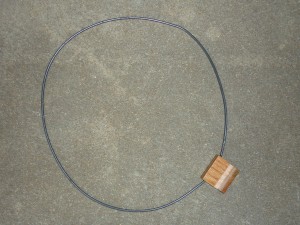
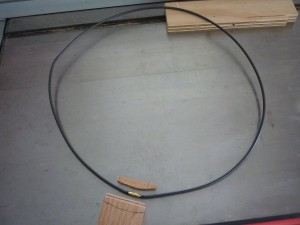
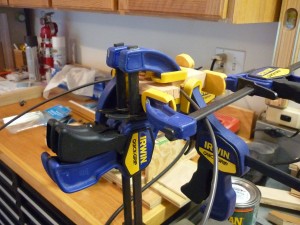
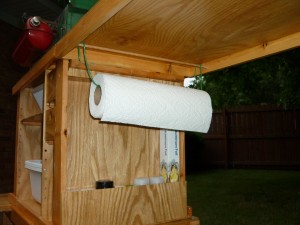

Recent Comments